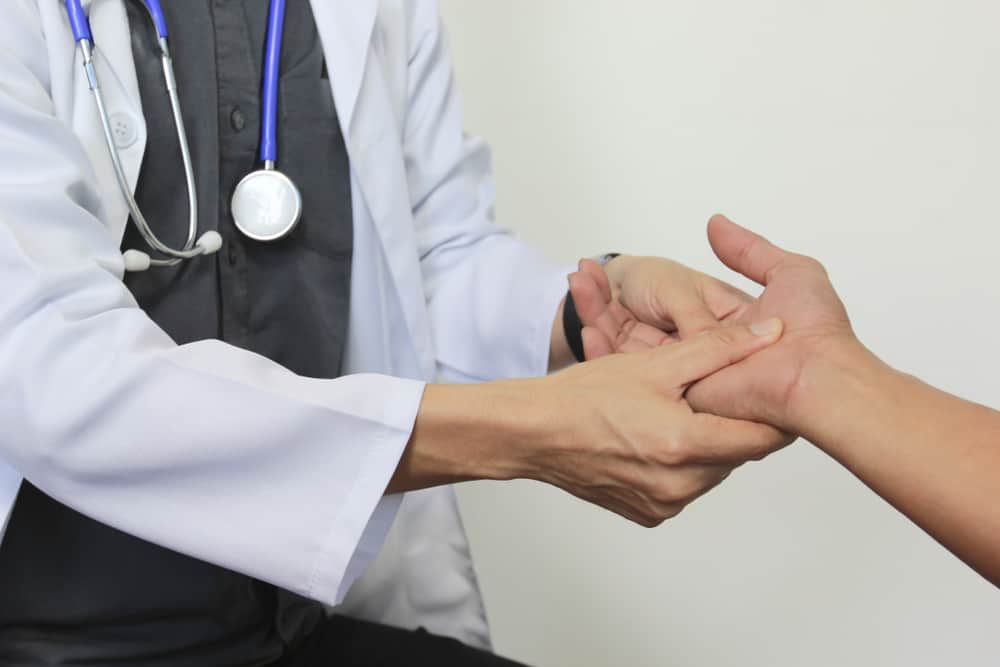
Parkinson’s disease, while a chronic condition, can be well-managed through several different treatment approaches. Parkinson’s disease affects everyone differently. There are more than 40 known symptoms of Parkinson’s disease, and not all people living with Parkinson’s will experience the same combination of symptoms. Consequently, Parkinson’s treatment is personalized based on present symptoms.
This article will provide an overview of Parkinson’s disease treatment, including medications, surgical options, supportive therapies, lifestyle interventions, and emerging therapies.
While Parkinson’s disease is known for causing motor-related symptoms, such as tremors, bradykinesia (slowed movement), postural instability, and stiffness/rigidity, people living with Parkinson’s disease can also experience impaired cognition, psychosis, sleep disturbances, impaired senses (e.g., vision and sense of smell), mood disturbances, and autonomic dysfunction.
After receiving a diagnosis of Parkinson’s disease, a combination of several medications and therapies may be prescribed or recommended by the healthcare team based on what symptoms are present. Members of a Parkinson’s disease healthcare team may include a healthcare provider, a movement disorder specialist, therapists, and a nutritionist. For people living with Parkinson’s disease who are candidates for surgical treatment, their healthcare team may also include a neurosurgeon, a neuropsychologist, or a general surgeon.
Medications often play a key role in Parkinson’s treatment. Based on present symptoms, existing health conditions, current medications, and age, people living with Parkinson’s disease may be prescribed one or more of the following medications that may be used to treat motor-related and non-motor-related symptoms of Parkinson’s disease:
For people living with Parkinson’s disease who don't respond well to medications or the therapeutic effects are insufficient, surgical options may be considered. The two most common surgical treatments include deep brain stimulation (DBS) and Duopa enteral suspension.
DBS is a neurosurgical technique that aims to regulate neuron activity via internal pulse generators to electrodes in specific target areas within the brain. DBS primarily addresses the motor-related symptoms of Parkinson’s disease; however, it may also help with non-motor symptoms such as disturbed sleep, urinary urgency, and pain.
Whether performed using traditional approaches or robotically, DBS is typically performed in three distinct stages:
Duopa enteral suspension involves delivering a gel form of carbidopa-levodopa directly into the intestine. Similar to the oral approach, levodopa is used in combination with carbidopa, as this reduces nausea caused by levodopa.
Surgery involves creating a stoma (small hole) in the abdomen to place a PEG-J tube in the intestine. A (Duopa) pump then delivers the gel from a cassette to the intestine through the PEG-J tube.
Parkinson’s treatment and management often require a well-rounded approach with a diverse team of healthcare professionals. Throughout the stages of Parkinson’s disease, new symptoms may arise, and other symptoms may become more prominent.
Parkinson’s disease can be well-managed, but it usually requires more than medication or surgery. Supportive therapies, such as physical therapy, occupational therapy, and speech therapy, can play an essential role in allowing people living with Parkinson’s disease to continue to move well, engage in activities that are important to them, and communicate with their loved ones.
Lifestyle changes, such as routine physical activity, may also be incorporated into treatment plans to help maintain mobility, balance, and Activities of Daily Living (ADLs). The Parkinson’s Foundation recommends participating in an exercise program that combines aerobic activity; strength training; balance, agility, and multitasking; and flexibility to help manage the symptoms of Parkinson’s disease.
Although still under development, there are several emerging therapies that offer new possibilities for Parkinson’s treatment, such as stem cell therapy and magnetic resonance-guided focused ultrasound (MRgFUS).
Stem cell therapy is an emerging and experimental treatment approach aimed at not only preventing further damage but potentially repairing and healing the damage caused by Parkinson’s disease. It involves the use of stem cells to replace or repair damaged or lost dopamine-producing neurons.
In 2022, the FDA approved a non-invasive ultrasound treatment device, Exablate Neuro, for the treatment of tremors that can’t be controlled through medication alone. Approval was based on clinical trial data demonstrating a nearly 50% improvement in tremors and motor function three months after treatment.
Regardless of the medications, therapies, surgeries, or lifestyle interventions involved in a treatment and management plan, healthcare providers and caregivers should consider monitoring the neurocognitive effects of treatment. Routine neurocognitive assessments can not only provide insight into how well the treatment plan is working but can also further inform care needs and identify people who may be at risk of falls to prevent serious injury.
Altoida’s mission is to accelerate and improve drug development, neurological disease research, and patient care. To learn more about our precision-neurology platform and app-based medical device, contact us.